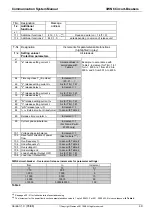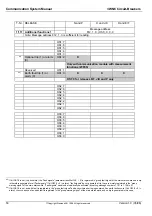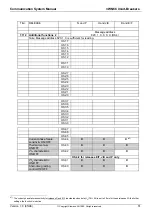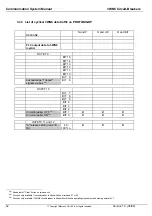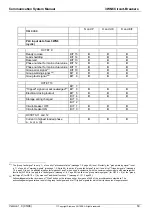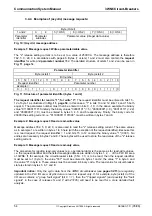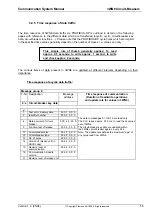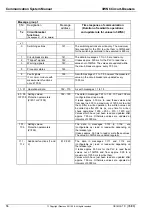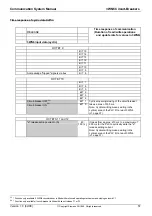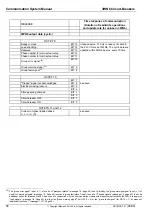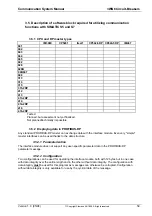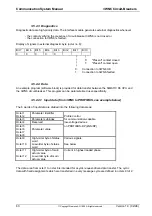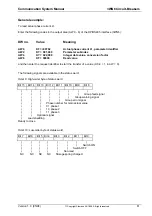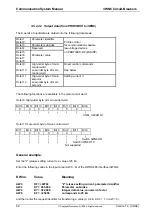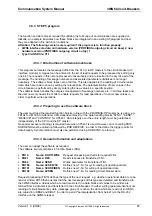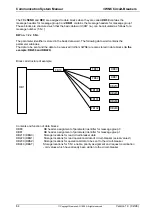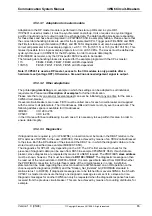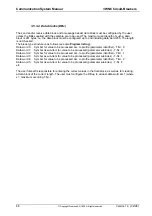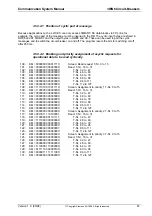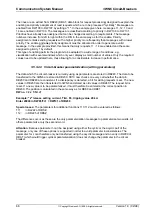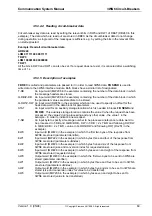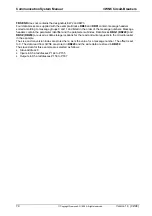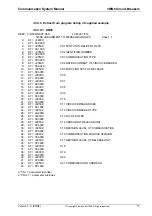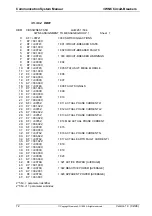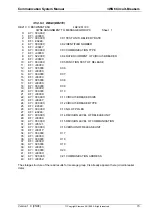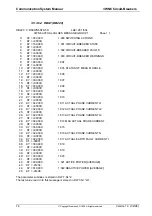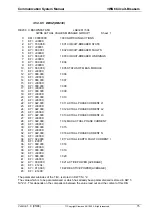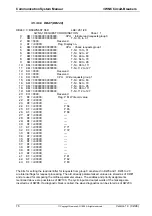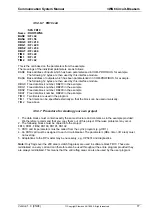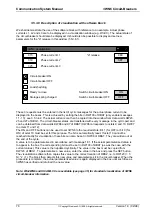
Communication System Manual
3WN6 Circuit-Breakers
Version 1.0 (05/98)
Copyright Siemens AG 1998. All rights reserved.
63
3.5.3 STEP 5 program
The function and data blocks required for utilizing the full scope of communication are supplied on
diskette. An example illustrates how these blocks are integrated in an existing S5 program and how
they are adapted in line with local conditions.
Attention: The following versions are required if the program is to function properly:
•
3WN6 interface module: old hardware version (PROFIBUS outgoing circuit on base) 2, new
hardware version (PROFIBUS outgoing circuit on top) 1
•
Type file/GSD file: V1.1
3.5.3.1 Brief outline of software block tasks
This program automates the message traffic from the PLC (via DP master) to the circuit-breaker (via
interface module). A request can be entered in the list of read requests to be processed by setting only
one bit. The requests in this list are processed consecutively and are inserted in the acyclic part of the
message. The handling of message numbers and associated parameter subindices is no longer
necessary. The software block takes care of all this. This also applies to the reading of circuit-breaker
data, which are read in once by setting the relevant bits. The parameterization of new values in the
circuit-breaker is performed by simply entering the new values in a specific position.
The software block handles the complex management of message numbers etc. in all three tasks and
the user now only needs to set bits to enable requests for read operations or to enter new values in
order to perform write operations.
3.5.3.2 Preparing to use the software block
The user must load the required function blocks in line with the PROFIBUS-DP master he is using, e.g.
FB192 for IM 308-C (Attention: CPU-dependent block!) or the data handling blocks "SYNC", "SEND",
"RECEIVE" and "CONTROL" for CP5431. Data integrity over the entire length must be guaranteed
independently of the CPU and the DP master.
No special access technology is required here when CP5431 is used. However, prior to calling FB10,
DHB SEND must be called up followed by DHB RECEIVE, in order to the define the trigger points for
data integrity. Synchronization must also be performed using DHB SYNC on start-up.
3.5.3.3 General information and adaptations
The user can adapt the software as required.
The software kernel comprises 6 function blocks (FBs):
•
FB10
Name: ROOT3WN6
Request processing and calls for required FBs
•
FB81
Name: REC
Reads response to transferred T-Nr.
•
FB82
Name: SEND
Writes parameter for transferred T-Nr.
•
FB100
Name: LESE WCC
Defines new T-Nr. for cyclic reading of operational data
•
FB101
Name: SCHREIBEN
Defines new T-Nr. for writing of operational data
•
FB102
Name: LESEN
Defines new T-Nr. for reading circuit-breaker data
Request processing (FB10) defines the type of the next request, e.g. whether operational data are to be
read or written. FB10 then ensures that the next messages of this type are detected and transferred to
the 3WN6 interface. Values which are read are stored in a data block and values to be written are
fetched from a data block and transferred to the circuit-breaker. If neither writing (parameterization) nor
reading of circuit-breaker key data (message group 0) is active, the data which are read out (in DBG1)
are copied into DBSZ and DBAT, in order to permit "parameterization from below" (via the RS-232
interface on the 3WN6 release).

